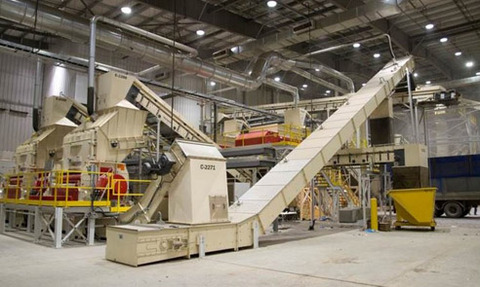Nature offers key to producing sustainable chemicals
25 Feb 2020

Industrial products that currently depend for their creation on chemicals from hydrogen and fossil fuels, could soon be produced sustainably from a combination of carbon dioxide and water, say scientists.
Using carbon dioxide as a feedstock for the chemicals industry instead of oil could reduce annual global greenhouse emissions by about 3.5 billion metric tons by 2030, suggest the Sheffield University researchers.
The result would a potentially sustainable route to chemicals production, reducing greenhouse gases and carbon emissions and avoid having to use hydrogen or oil as the feedstock for industry.
In a paper published in ChemSusChem journal, Dr James McGregor and his team from the university’s Department of Chemical and Biological Engineering, identified for the first time that they could modify the natural process to react carbon dioxide with water in order to tailor the reaction to produce specific desirable high value chemicals
High value chemicals which could be produced using this process include surfactants (used in products such as soap, dishwasher liquid and shampoo), coatings, food ingredients, cosmetics, as well as fuels and pharmaceuticals
McGregor said: “What this research has done is to look at a simple reaction, using just water and carbon dioxide, applying intelligent engineering to look at the natural process happening on the seabed, then adapting that process into something that makes industrially useful chemicals.
These chemicals can then go on to be used in everyday things, including surfactants, coatings, food ingredients, cosmetics, as well as fuels and pharmaceuticals
Dr James McGregor, Department of Chemical and Biological Engineering, University of Sheffield
“These chemicals can then go on to be used in everyday things, including surfactants (used in end consumer products such as soap, dishwasher liquid and shampoo), coatings, food ingredients, cosmetics, as well as fuels and pharmaceuticals.”
Concern over sustainability and the reduction of carbon emissions, interest has grown in how to use new carbon capture technologies to replace fossil fuels. Currently, though, using carbon dioxide as feedstock requires it to be mixed with hydrogen, making the process energy intensive to make and often dependent on fossil reserves.
McGregor added: “In the future, we’re going to be capturing lots more carbon dioxide from industrial sources, which means there should be a readily available, low cost carbon source.
“If we can use this effectively through the processes demonstrated in our research, it would support these activities to reduce our carbon emissions and provide a fossil-free route to a range of valuable chemical products.”

